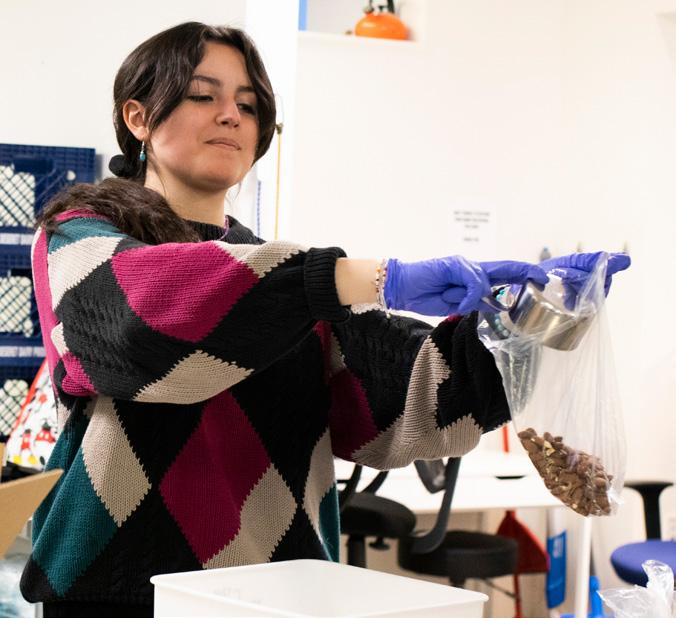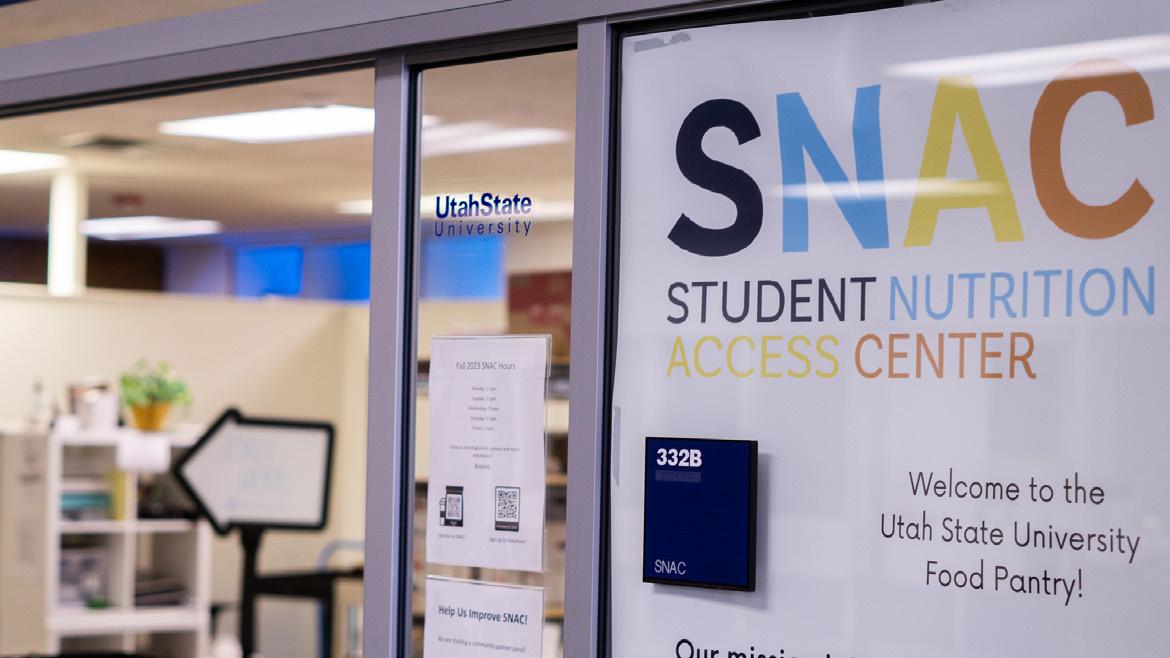
5 minute read
What every first-year student needs to know about SNAC
by Brook Wood
Located on the third floor of the TSC, the food pantry can be a valuable resource for incoming Aggies. Once a week, students can visit the Student Nutrition Access Center and obtain college essentials such as food, hygiene products and educational tips on maintaining a healthy diet.
Kaylie Meccariello is one of three student directors overseeing SNAC. She emphasized the importance of using the food pantry, especially as a first-year student.
“SNAC is a great resource for students,” Meccariello said. “I’ve definitely used it as a student before I started working here, just to help get food to get through college. College is super busy, and so having this extra resource — just as something to rely on that’s constant — has been a huge help for me.”
Meccariello said SNAC has a reclaimable nature and has an important role in recycling on campus.
“We also do a lot of food recovery, so we pick up food from other places on campus or different restaurants in the valley and use food that maybe they would have thrown out,” Meccariello said.
While SNAC plays a major role in providing free food for students, it also provides free items such as soap, shampoo and other hygienic products.
It can be scary using SNAC for the first time, but according to the student directors, SNAC is absolutely for each and every student — no limitations or rules required.
“I’ve definitely had that thought before — that maybe I can get by without it,” Meccariello said. “But first of all, we have so much food. We want students to come in. We’re doing so much to try and expand and reach more students.”
Staff and student volunteers work constantly to replace products on the shelves and ensure there is a variety to choose from for those visiting.
“We definitely welcome anybody, even if they don’t feel like they need it, just to come in and check it out,” Meccariello said. “We have a ton of different options as far as dietary restrictions — gluten-free, dairy-free — things like that. So, it’s a great resource for individuals who may have those struggles as well.”
Kaiah Thomas, another student director for SNAC, emphasized the benefits of visiting the pantry at least once during the start of first-year students’ time at USU to know what is available to them.
“Maybe they aren’t going to struggle their freshman year and they’ll be just fine, but then maybe their sophomore year, they’re not going to be on a meal plan anymore, and they’re going to need help buying food and getting food,” Thomas said. “Knowing about this right off the bat is super important, then they can be comfortable using it.”
Meccariello and Thomas agreed SNAC has an easy process to follow to obtain nutritious food during busy college months.
“I think sometimes people are nervous to come,” Thomas said. “They shouldn’t be nervous to come. This is no questions asked. You just swipe your A-number, and you’re good to go grab what you need. We’re not going to be interrogating you or anything. It’s so chill — it’s so useful and so helpful, and more people need to know about it.”
SNAC has implemented a once-a-month drive-through pantry hosted in the Maverik Stadium parking lot. The mobile food pantry is open to both students and community members and is an essential resource to know about, according to Thomas.
“This does not count against someone’s once weekly visit to SNAC,” Thomas said. “You can go to the mobile pantry as well as going to the SNAC pantry in the same week. The mobile pantry has a lot more perishable items, like milk, bread, fresh fruits and vegetables that traditional food pantries don’t normally have.”
The mobile food pantry occurs on the second Tuesday of each month. Additional information on the pantry can be found on the SNAC Instagram at @ususnac.
Georgia Wilde, the third student director, addressed the recent USU bill that takes $3 from each student’s fees to go to SNAC funding.
“That’s a really small amount from each student, but it adds up a lot, and it’s SNAC’s first official USU funding. Previously, we were all completely donor based … it is going to allow us to get gluten-free options, dairy-free options — even more than we have right now,” Wilde said.
Moving out for the first time is a challenging process and can make it difficult for students to maintain a healthy diet, according to Wilde.
“[SNAC] helps me be able to afford living on my own and takes off a little bit of the stress,” Wilde said. “That first time moving out can be really, really hard and difficult on students. I think things that fall behind are a balanced meal and a nutritious diet.”

Bread and pastries are repurposed from places like Kneaders and the Hub.
“That’s food that could have been wasted or thrown away otherwise, and it’s now getting a second life and getting a chance to get to students for free,” Wilde said.
Wilde said the more SNAC is utilized, the more it can repurpose and create a variety of options for students.
“The more students that access this resource that’s completely available to every single one of you, the more that we can recover, the more that we can do for everyone and the more wide range of students we can take care of with their dietary needs,” Wilde said.
Incoming first-year students are advised to investigate and use SNAC as a resource — not just to benefit their diets and pockets but to improve on-campus food waste.
“I would tell incoming freshmen, if you’re nervous, to come check it out — just come once,” Wilde said. “Come once and give it a shot. It’s really easy, and when you come on through, I think you’ll be surprised at the selection we have. I think you’ll be surprised at how helpful it is.”










